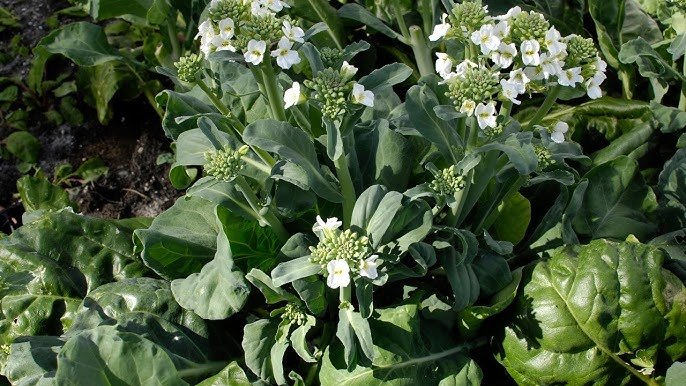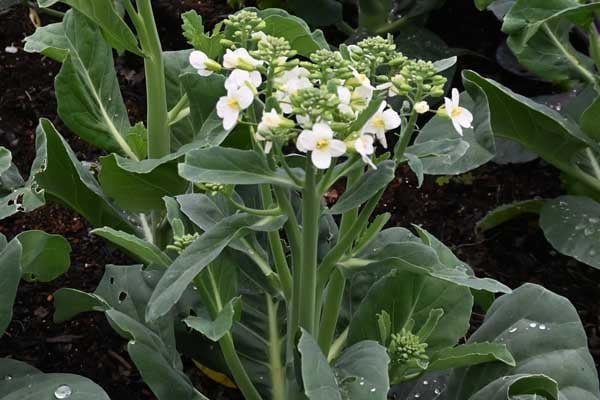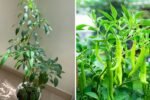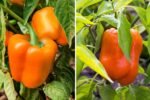Kailaan, also known as Chinese broccoli, is a nutritious and flavorful leafy green vegetable widely used in Asian cuisine. With its glossy dark green leaves, thick stalks, and small florets, Kailaan offers a slightly bitter, earthy taste that pairs beautifully with garlic, oyster sauce, or simple stir-fries. Beyond its culinary appeal, it is rich in vitamins A, C, and K, calcium, and antioxidants, making it a superfood for your garden and kitchen.
Whether you want to grow it in garden beds, raised containers, or even small pots, learning how to grow and cook Kailaan is both rewarding and straightforward. This detailed guide will walk you step by step through the entire process — from planting seeds to harvesting and cooking fresh, healthy Kailaan at home.
What Is Kailaan (Chinese Broccoli)?

Kailaan (Brassica oleracea var. alboglabra) is a member of the Brassica family, related to broccoli, cabbage, and kale. Unlike broccoli, Kailaan does not produce large heads; instead, it has tender stems with leafy tops and small florets. The vegetable is prized for its quick growth, high yield, and nutritional benefits.
Kailaan thrives in warm, humid climates, but it can also grow in cooler temperatures if protected from frost. It’s ideal for gardeners seeking a fast-growing green that can provide multiple harvests throughout the season.
Why Grow Kailaan at Home?

Homegrown Kailaan offers numerous advantages:
- Fast Growth: Seedlings mature quickly, often ready for harvest within 40–60 days.
- Multiple Harvests: Cut leaves and stems regularly, and the plant continues to produce new shoots.
- Nutrient-Rich: Packed with vitamins, minerals, and antioxidants.
- Versatile Cooking: Perfect for stir-fries, soups, steaming, or sautéing.
- Compact Growth: Ideal for small gardens or container planting.
Growing Kailaan at home ensures fresh, pesticide-free produce that tastes far better than store-bought options.
Step 1: Choosing the Right Variety

Different Kailaan varieties can suit your climate and taste preferences. Popular types include:
- Early Kai-Lan: Fast-growing and ideal for spring planting.
- White Stem Kai-Lan: Has tender white stems and dark leaves, often preferred for stir-fries.
- Chinese Kale: Produces thicker stems and is slightly sweeter than standard Kailaan.
Selecting a variety depends on your growing conditions, desired harvest time, and culinary preference.
Step 2: Timing and Climate
Kailaan is a warm-season crop, preferring temperatures between 18–28°C (65–82°F).
- Spring Planting: Sow seeds indoors 3–4 weeks before the last expected frost. Transplant seedlings outdoors when the soil is warm and frost risk has passed.
- Fall Planting: Sow seeds in mid-summer for a late fall harvest. Kailaan thrives in cooler temperatures but may bolt if exposed to frost.
In mild climates, Kailaan can be grown year-round with proper care and protection.
Step 3: Preparing the Soil
Healthy, fertile soil is key to fast-growing Kailaan plants.
- Soil Type: Well-draining, loamy soil enriched with organic matter works best.
- Soil pH: Aim for slightly acidic to neutral soil, pH 6.0–7.0.
- Amendments: Mix compost, aged manure, or organic fertilizer to boost nutrients.
- Drainage: Avoid waterlogged soil; raised beds or containers help prevent root rot.
Proper soil preparation ensures vigorous growth, tender leaves, and high yields.
Step 4: Planting Kailaan Seeds

Kailaan can be grown from seeds or transplants.
Direct Sowing:
- Sow seeds ¼–½ inch deep and 2–3 inches apart in rows spaced 12–18 inches.
- Cover lightly with soil and water gently.
- Seeds typically germinate in 5–10 days.
Starting Indoors:
- Sow seeds in seed trays 3–4 weeks before transplanting.
- Once seedlings reach 4–6 inches tall and have 3–4 true leaves, harden them off before planting outside.
Transplanting:
- Space seedlings 12–18 inches apart to allow airflow and avoid overcrowding.
- Water immediately after planting to settle the soil around the roots.
Step 5: Watering and Mulching

Kailaan requires consistent moisture for tender, sweet stems and leaves.
- Water deeply about 1–1.5 inches per week depending on rainfall.
- Mulch with straw, leaves, or compost to retain soil moisture, regulate temperature, and reduce weeds.
Avoid overhead watering to reduce the risk of fungal diseases. Instead, water at the base using a watering can, soaker hose, or drip irrigation system.
Step 6: Fertilizing
Though not heavy feeders, Kailaan responds well to nutrients during growth.
- Incorporate a balanced fertilizer or compost before planting.
- Feed every 3–4 weeks with a nitrogen-rich liquid fertilizer to encourage leafy growth.
- Avoid over-fertilization, which can lead to excessive leaf growth but fewer edible stems.
Step 7: Pests and Disease Management
Common pests affecting Kailaan include:
- Aphids: Tiny insects feeding on leaves; use neem oil or insecticidal soap.
- Cabbage worms: Caterpillars that chew leaves; handpick or use organic Bt spray.
- Flea beetles: Small beetles that create holes in leaves; row covers or diatomaceous earth help protect plants.
Preventing disease:
- Rotate crops annually to avoid soil-borne diseases.
- Avoid planting near other Brassicas if possible.
- Ensure proper spacing for airflow and avoid overhead watering.
Step 8: Harvesting Kailaan
Kailaan is usually ready to harvest 40–60 days after sowing.
- Harvest tender stems with leaves before flower buds open.
- Cut stems at the base, leaving some foliage to encourage regrowth.
- Frequent harvesting promotes continuous production of new shoots.
For the best taste, harvest in the morning when the leaves are crisp. Avoid letting stems grow too large, as they may become tough and bitter.
Step 9: Cooking Kailaan
Kailaan is versatile in the kitchen and pairs well with a variety of flavors.
Popular methods include:
- Stir-Frying: Quickly cook with garlic, ginger, and soy sauce for a classic Asian side dish.
- Steaming: Lightly steam and drizzle with sesame oil or oyster sauce.
- Sautéing: Combine with olive oil and chili flakes for a simple, spicy preparation.
- Soups and Noodles: Add to soups or noodle dishes for added nutrition and flavor.
The leaves, stems, and florets are all edible, and the slightly bitter flavor pairs beautifully with salty, sweet, or umami sauces.
Step 10: Saving Seeds
If you want to grow Kailaan year after year, you can save seeds:
- Allow a few plants to bolt and flower.
- Collect seed pods once they dry on the plant.
- Store seeds in a cool, dry place.
Properly stored seeds can remain viable for 2–3 years, giving you a sustainable home gardening cycle.
Common Mistakes to Avoid
- Planting in Hot Weather: Kailaan bolts quickly in high temperatures.
- Inconsistent Watering: Dry soil leads to tough, bitter leaves.
- Overcrowding: Poor airflow increases the risk of disease.
- Ignoring Pests: Check plants regularly for aphids, caterpillars, and flea beetles.
- Harvesting Too Late: Overgrown stems are tough and less flavorful.
Final Thoughts
Growing and cooking Kailaan (Chinese broccoli) is an enjoyable and rewarding experience for gardeners of all skill levels. Its fast growth, multiple harvests, and nutritional benefits make it a standout vegetable for any edible garden.
With proper soil preparation, consistent watering, and attentive care, you can harvest tender, flavorful Kailaan multiple times per season. From stir-fries to soups, the vegetable’s versatility in the kitchen ensures that your homegrown produce will be both delicious and healthy.
Whether you are new to edible gardening or a seasoned green thumb, Kailaan is a vegetable that combines ease of growth, quick harvest, and exceptional taste — making it a must-have in your garden.






Leave A Comment